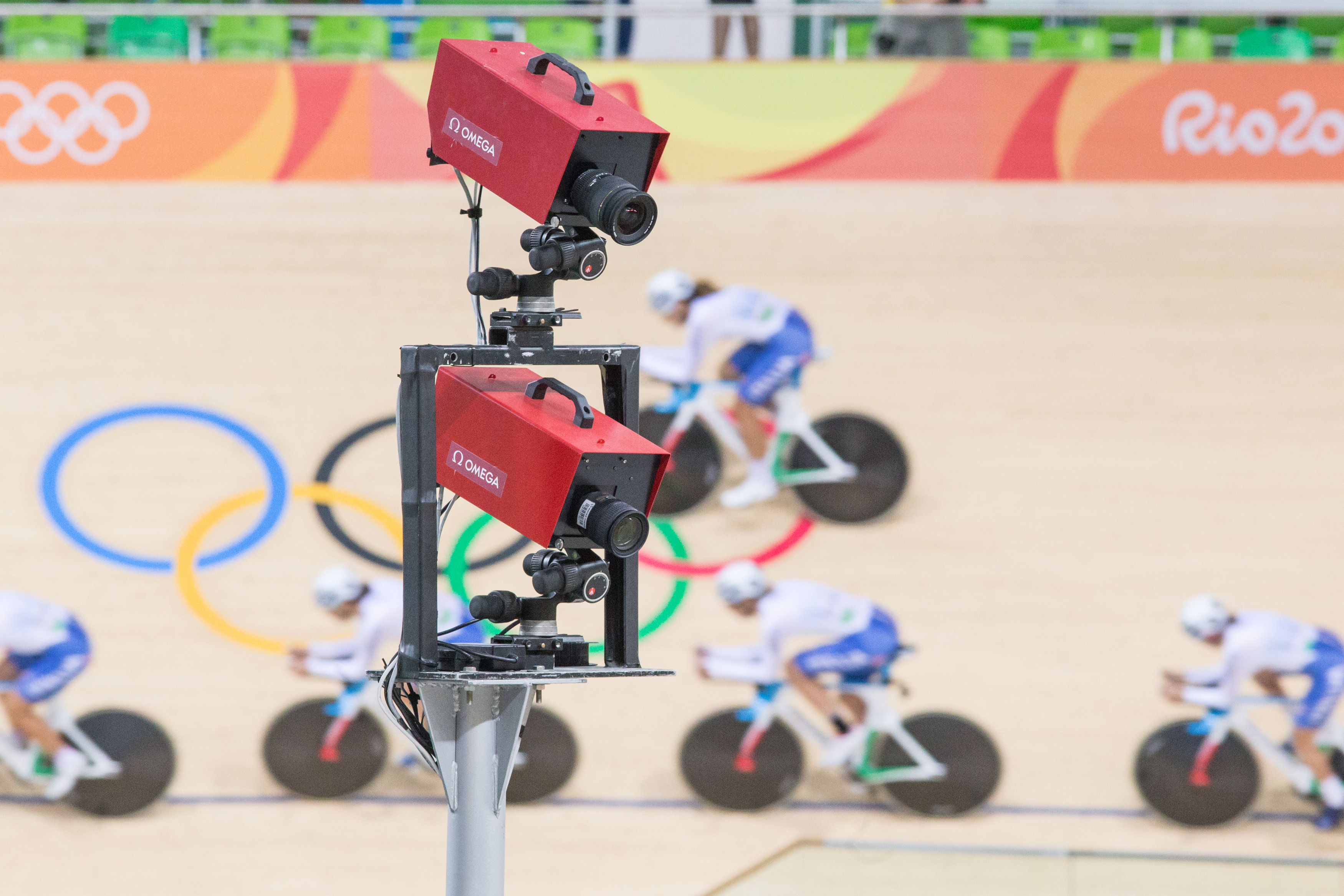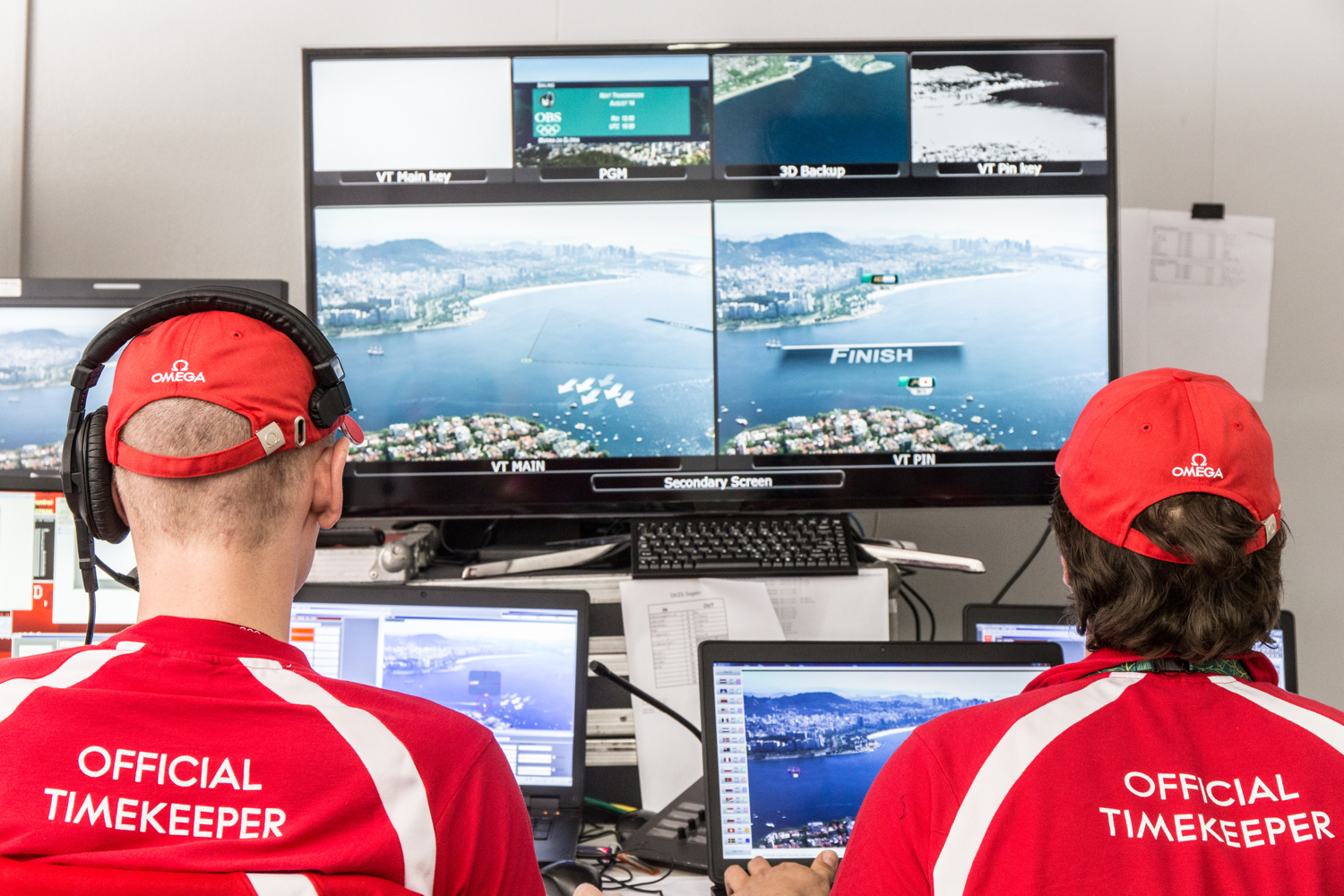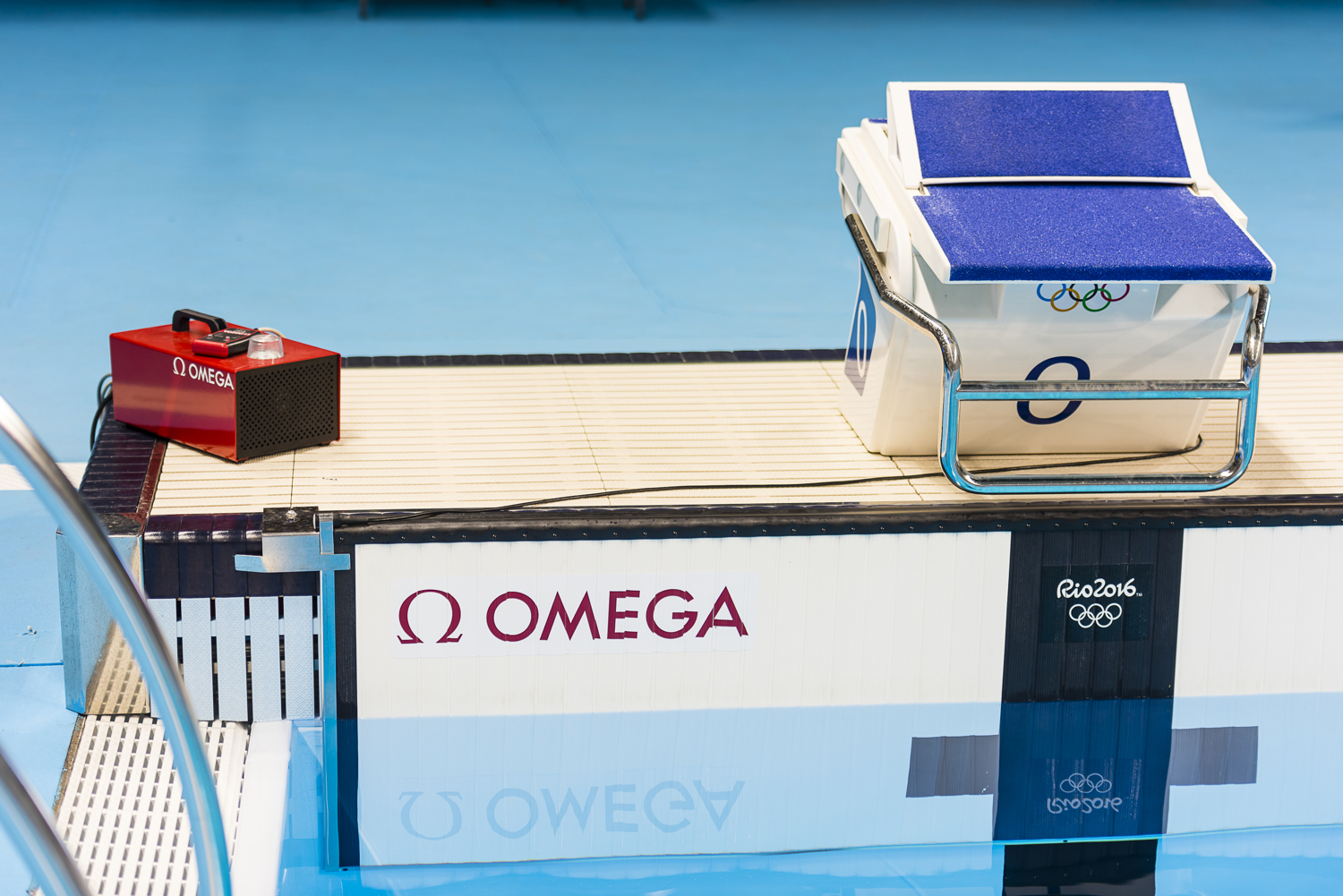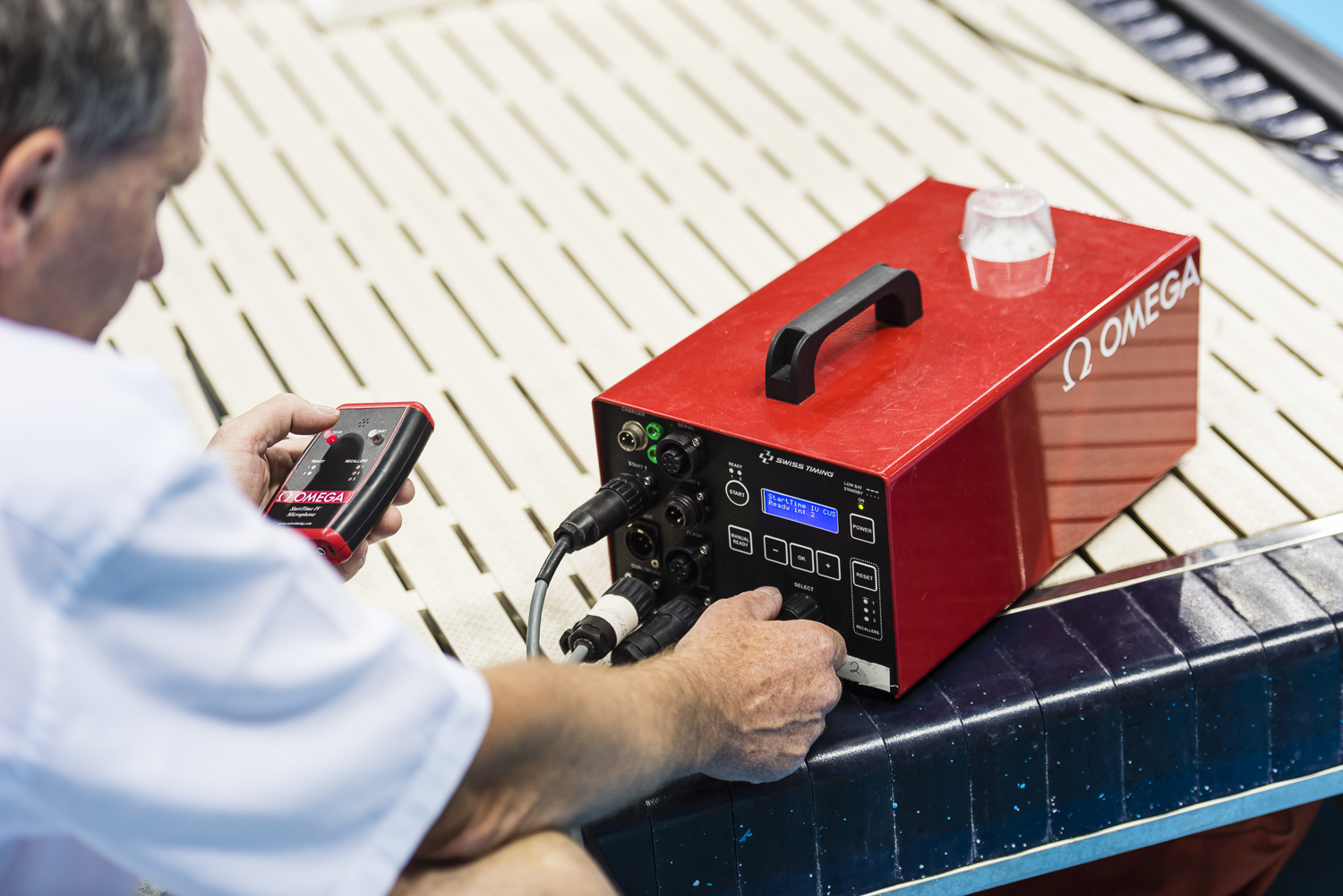In the Olympics’ 100-meter sprint, just 0.08 seconds determined the difference between silver and gold — that, and a 10,000-frames-per-second camera behind the photo finish.
The official camera recording that photo finish and ones just like it throughout the games actually isn’t from a big camera company (though they use different Nikon lenses depending on the event), but Swiss watchmaker Omega. It has recorded the finishes for the past 84 years.
In the latest tech being used at Rio, the finish line camera, called the Scan’O’Vision Myria, doesn’t take your typical 3:2 aspect ratio photograph. Instead, the camera scans just a small portion of the finish line at 10,000 frames per second, putting vertical slices together to create a detailed image. An inclinometer adjusts the finish line camera to the optimal height, since different events have different rules on what needs to cross the finish line first. In the 100m sprint, it’s the chest.
Along with the camera, a pair of photocells registers when the athletes cross the finish line, quickly posting the official times on the scoreboards and on broadcasts of the games. Each photo cell has four sensors, and the two of them are placed directly across from each other on either side of the finish line. The tech used in Bejing had only two sensors on each side, and the expansion currently being used in Rio allows the cells to be operate without adjusting the height for different events.
The camera and photocells work together to create an image paired with a time chart so that judges can determine the exact time the athlete (or the athlete’s chest, for the sprint) crossed the finish line.
Of course, the official time needs a starting point, too — an Omega trigger at the beginning of the race begins the clock. Sensors in the foot blocks also alert judges to any false starts. “The electronic starting pistol uses light and sound to give racers an equal start, and the innovative starting blocks include a false-start detection system that measures the pressure of an athlete’s foot against the block 4,000 times per second,” according to Omega. “This allows timekeepers to easily detect the smallest false start.”
Omega’s timekeeping technology is also used in archery, basketball, cycling, open water swimming, sailing, and tennis, among other sports and activities.
The timing and photo finish technology has come quite a ways even from just a few short years — the 2014 Sochi camera recorded at 2,000 frames per second. Let’s see how the tech improves when the Olympics roll into South Korea for the 2018 Winter Games.








